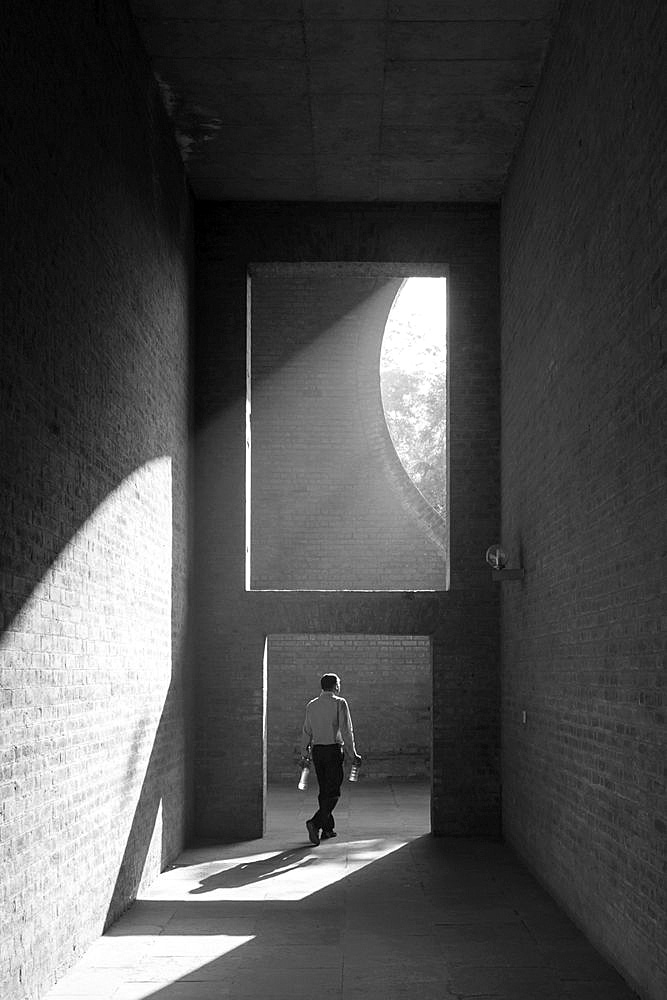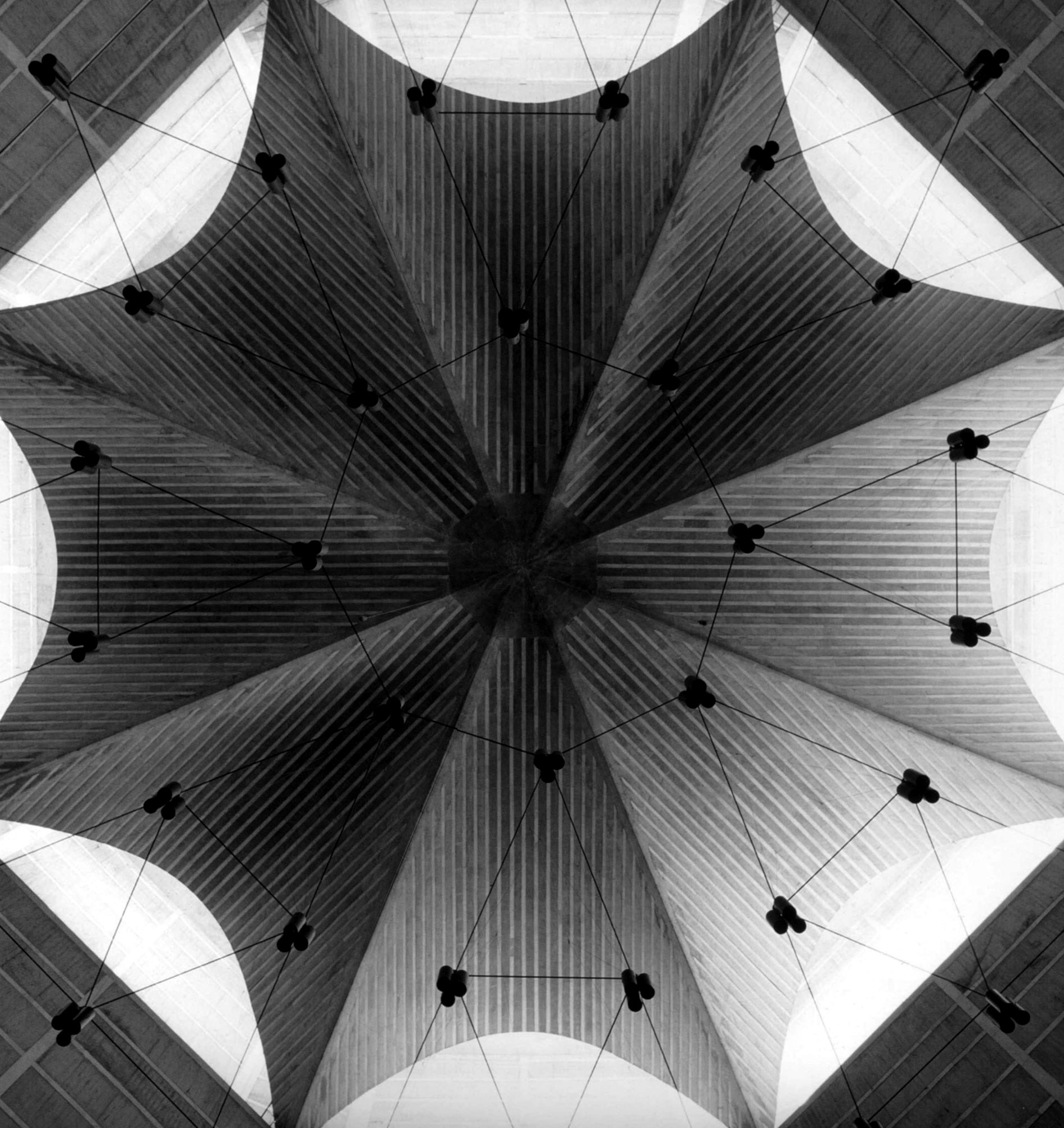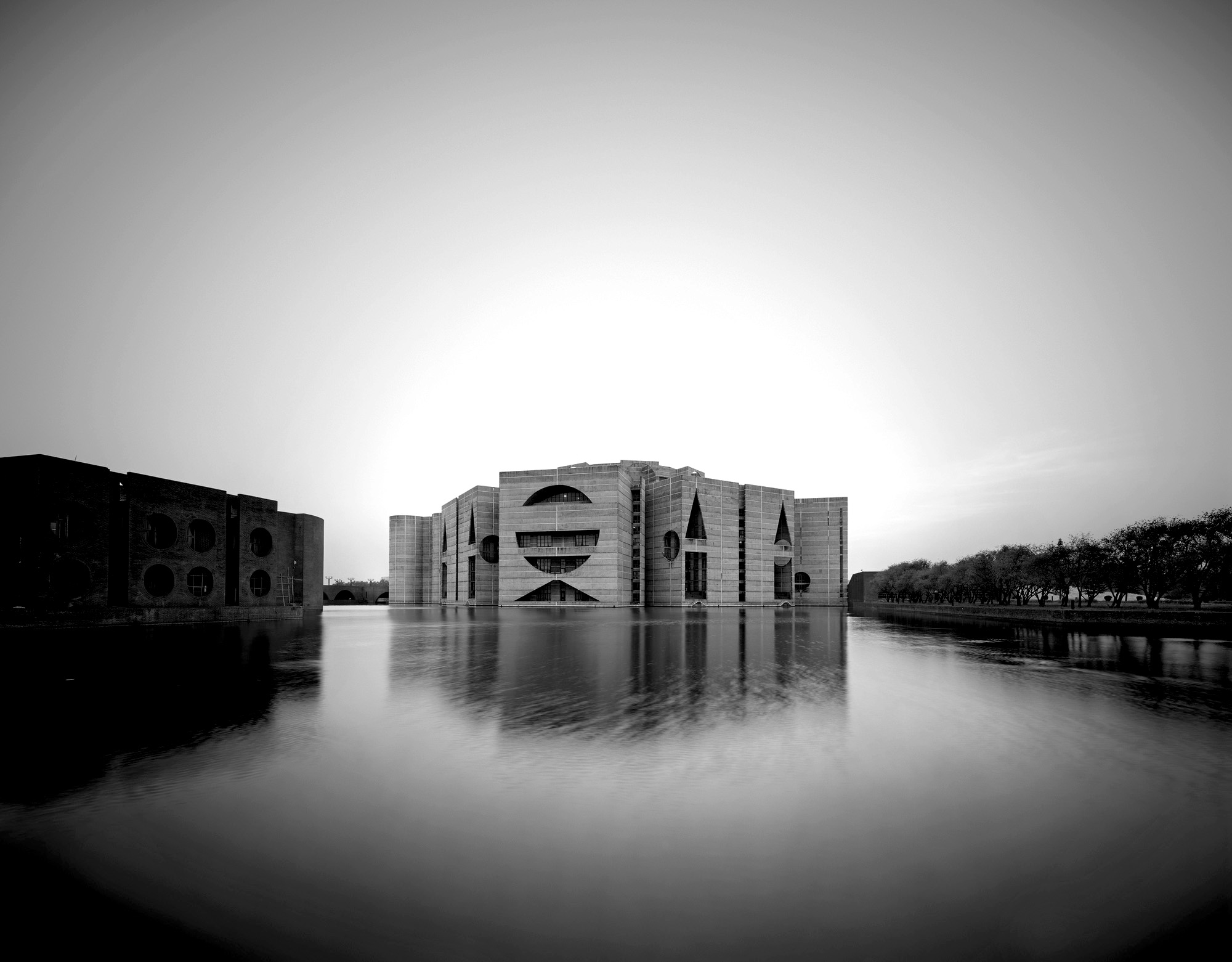Louis Kahn
Renowned for his distinctive architectural style that was monumental and monolithic, Kahn's volumetric buildings for the most part do not hide their weight, their materials, or the way they are assembled. Famous for his meticulously-built works, his provocative proposals that remained unbuilt, and his teaching, Kahn was one of the most influential architects of the twentieth century. He was awarded the AIA Gold Medal and the RIBA Gold Medal, and at the time of his death he was considered by some as "America's foremost living architect."
"We are born of light. The seasons are felt through light. We only know the world as it is evoked through light."
– Louis Kahn
Louis Kahn was born into a poor Jewish family in Estonia. His birth name was Itze-Leib Schmuilowsky, but family changed their name to Kahn after they emigrated to the United States in 1906.
Khan studied architecture with a traditional Beaux-Arts focus at the University of Pennsylvania. After graduating, he made a European tour, where he was particularly interested in the medieval walled city of Carcassonne, France, and the castles of Scotland, rather than any of the strongholds of classicism or modernism.
Kahn's distinctive architectural style was not solidified until he was in his fifties. His most celebrated works infused the International style with a fastidious, highly personal taste, which some have called "a poetry of light." He was known for his ability to create monumental architecture that responded to the human scale.His built projects, while few in number, reflect his deep personal involvement with each. Isamu Noguchi called him "a philosopher among architects."
In 2003, Kahn's son Nathaniel released a documentary about his father entitled My Architect: A Son's Journey. The Oscar-nominated film provides insights on Kahn's design philosophy and interviews with such renowned architectural contemporaries as Frank Gehry, Philip Johnson, I. M. Pei, and Robert A. M. Stern. It also examines Kahn's unusual and complicated family relationships.
Some of Kahn's most prominent works include:
• The Salk Institute, La Jolla, California (1959-65)
• Kimbell Art Museum, Fort Worth, Texas (1967-72)
• Yale University Art Gallery, New Haven, Connecticut (1951-53)
• National Assembly Building, Dhaka, Bangladesh (1962-74)




